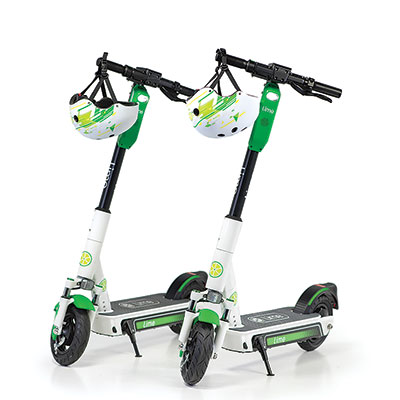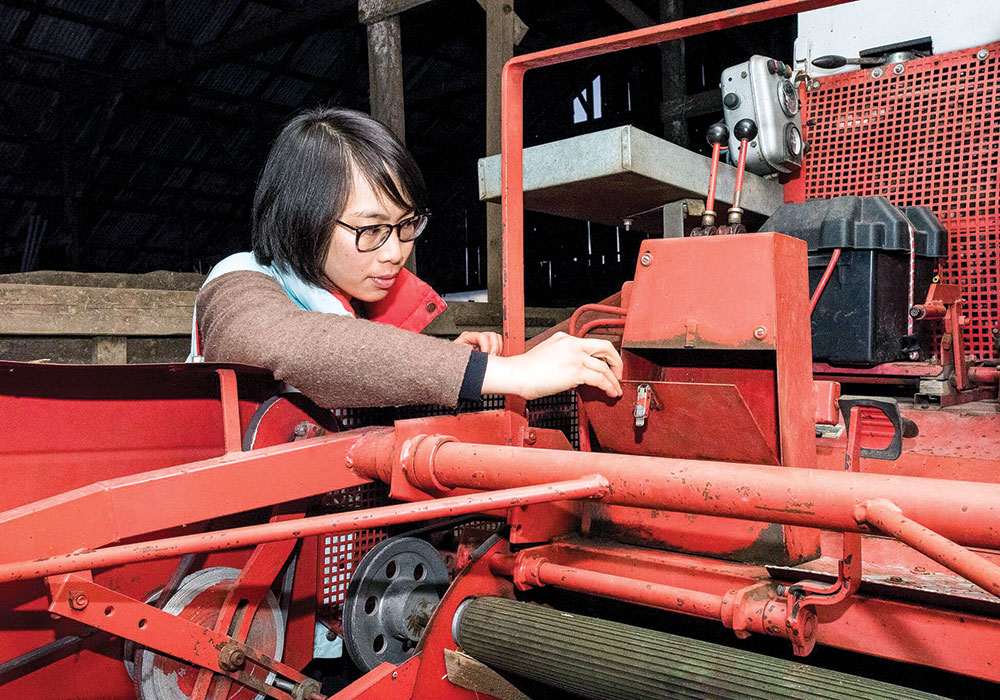Planning December 2019
Et Cetera
Research: Dockless E-Scooters
Municipalities aren't the only ones struggling to keep up with the blossoming business of electric scooters. Research on their impact has also lagged, but a new study is offering some insights.

Photo courtesy Lime.
A joint study by the Austin, Texas, health department and the federal Centers for Disease Control and Prevention interviewed scooter users who wound up in Austin emergency rooms. Nearly half had head injuries, but fewer than one percent were wearing a helmet during the ride.
Nearly two-thirds of those interviewed reported completing some app-based training before riding, but that might not be enough. The study offers some advice: Cities and companies should "increase the frequency and methods of educational messages on safe e-scooter riding practices."
— Jim Sweeney
Sweeney writes about architecture, design, and science from Rockville, Maryland.
Film: The Hottest August

An "Afronaut" crosses time, space, and New York City in The Hottest August. Photo courtesy Grasshopper Film.
Assembled from meandering footage shot in New York City's outer boroughs over a single summer month in 2017, The Hottest August is ostensibly about the effects of climate change on urban neighborhoods. But what emerges from director Brett Story's artful and meditative treatment is so much more: a disquieting inquiry into an unsettling age of fear in the face of an uncertain future.
Blending irony with classic cinéma vérité, the camera captures daily discussions and street-corner interactions, from barroom conversations ("talk sports, never politics") to the mystical peregrinations of a space-suit wearing "Afronaut" who has journeyed back from the future to exchange knowledge and experiences across time (only in New York!).
If we are willing to suspend our need for a linear narrative and surrender to this seemingly random assortment of encounters, what emerges is a powerful new form of film. As the emotions of these people and places seep into our unconscious mind, we uncover a profound portrait of a community perched on the edge of oblivion — ecologically, economically, existentially; what the filmmakers refer to as "a portrait of collective anxiety."
— Ezra Haver Glenn, AICP
Planning's regular film reviewer, Glenn teaches at MIT's Department of Urban Studies & Planning. He writes on cities and film; read more at urbanfilm.org.
Exhibit: Crossroads: Change In Rural America

Photo courtesy the Smithsonian.
The Smithsonian is circulating a new show on economic and societal changes in rural small towns over the 20th century. While population decline has created hardships for many small towns, the exhibit finds new opportunities for growth and development.
As part of the Smithsonian's Museum on Main Street program, which takes exhibits on the road to small towns, Crossroads will visit more than 160 small towns in 28 states over the next six years. View the schedule.
— Jim Sweeney
Tech: Be My Eyes
Is this a $5 bill? Which room is the public meeting in? Is this my Amazon delivery or my neighbor's? This free app uses video calling to connect vision-impaired people with nearly three million volunteers speaking 180 languages (and counting) for visual assistance. Volunteers can download the Be My Eyes app for free and are sent an alert when a vision-impaired person needs assistance.
— Martin Jimenez
Jimenez is the membership manager at APA.
Et Cetera is a curated collection of planning odds and ends. Please send information to Lindsay R. Nieman, Planning's associate editor, at lnieman@planning.org.


